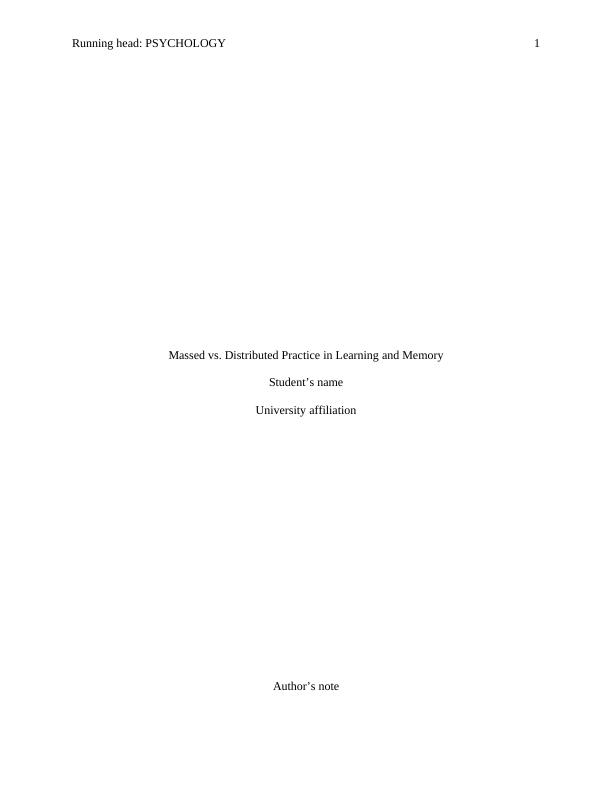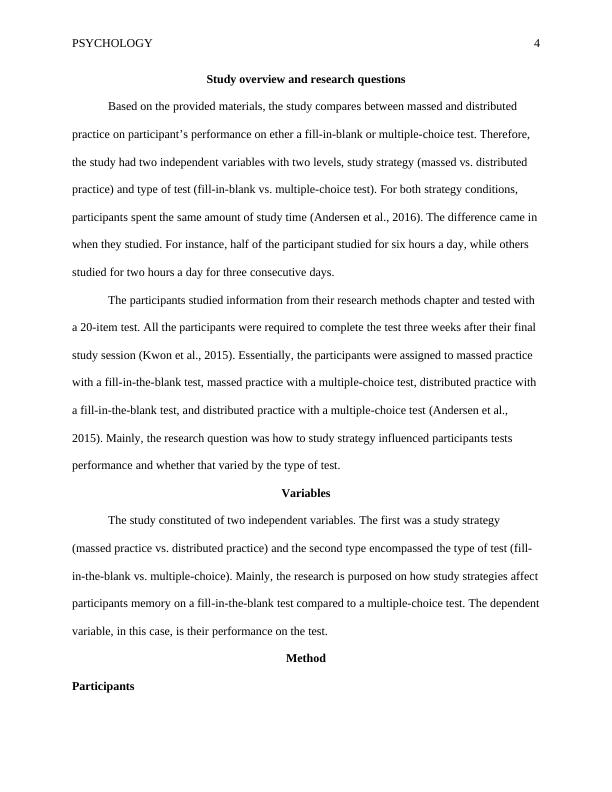Massed vs. Distributed Practice in Learning and Memory
This assignment requires students to write a research report on the relationship between moral foundations and Australian political orientation, including a literature review, methodology, results, and discussion sections.
11 Pages2761 Words148 Views
Added on 2022-12-01
About This Document
This article explores the effects of massed and distributed practice on learning and memory. It discusses the benefits of spaced study, the impact on educational settings, and the optimal time intervals for memory retention. The study compares performance on fill-in-the-blank and multiple-choice tests using different study strategies. The results show that distributed practice improves performance on fill-in-the-blank questions, while massed practice is more effective for multiple-choice questions.
Massed vs. Distributed Practice in Learning and Memory
This assignment requires students to write a research report on the relationship between moral foundations and Australian political orientation, including a literature review, methodology, results, and discussion sections.
Added on 2022-12-01
ShareRelated Documents
End of preview
Want to access all the pages? Upload your documents or become a member.
Effectiveness of Learning Strategies and Spacing in Education Settings
|15
|3295
|258
Effect of Distributed vs Massed Learning on Memory and Recall
|11
|2858
|144
PSY10004: Psychology Lab Report
|5
|1154
|533
Massed Vs. Distributive Practices Assignment
|12
|3581
|43
Effect of Distributed Practice vs Massed Practice on Learning: Lab Report Assignment
|15
|3717
|222
Mass Practice vs Distributive Practice Learning Techniques
|13
|2773
|29




